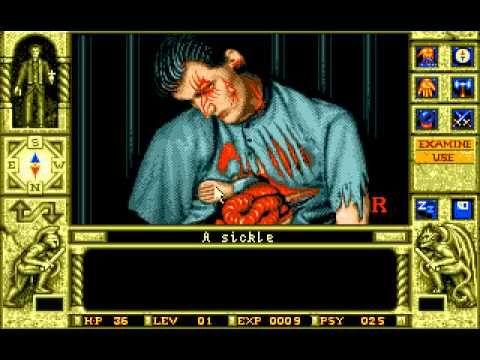Behind The Gruesome Death Scenes of Horror Soft’s Horror Games
Dive into the gory horror games of the late ‘80s and early ‘90s.
You Are Reading :Behind The Gruesome Death Scenes of Horror Soft’s Horror Games

It’s hard to tear your eyes away from the morbid screenshots of Waxworks (1992), a point-and-click retro horror game by defunct studio Horror Soft, now better known as Adventure Soft. Think maggots crawling out of festering wounds and orifices, blood-soaked innards pouring out of carcasses, and eldritch horrors with oozing diseased sores, hurling blood-filled tendrils towards the screen. Adding to the grotesque is how these scenes were gorily animated by a 8-bit colour palette with startling, stomach-churning realism.
(Some unsettling images of body horror are included in this piece.)
But the gore of Waxworks—as well as the studio’s other horror fare—was not just notable for its violence; it was also part of the studio’s attempts to fully exploit the graphical capabilities of consoles like the Amiga, especially when text-based games were dwindling in terms of popularity at the same time. As Horror Soft, Waxworks was the final game the developer released, with the title preceded by a handful of titles: Personal Nightmare (1989), as well as two games based on horror icon Elvira—Elvira: Mistress of the Dark (1990) and Elvira 2: The Jaws of Cerberus (1991). At that time, horror games were taking a turn towards violence, which was unprecedented before that period. One such title is Chiller (1986), a game that’s essentially a torture simulator, in which you’re presented with four shooting galleries and a variety of ways to dismember the bodies on screen. Even so, its graphics—and other violent horror games at that time—were gory but not particularly intricate, probably owing to the technologies behind the consoles back then.
In contrast, Horror Soft’s titles released towards the late ‘80s and early ‘90s were pretty graphics intensive. In Personal Nightmare, faces were depicted with meticulous detail, with shadows accentuating the sunken cheeks and hollow sockets of its demons. Mistress of the Dark and The Jaws of Cerberus upped the ante with its carnage, with images of bodies crushed by falling debris, and corpses that revealed crimson red flesh and tendon. These were perhaps inspired by the cult success of horror games like Splatterhouse (1988) which, as compared to the pixel horror games released just a mere few years ago—such as Halloween (1983) and The Texas Chainsaw Massacre (1983)—would be considered downright nightmare-inducing. Less well-known but equally controversial is the text adventure game, Jack the Ripper (1987), which was also one of the few games to be awarded the 18-certificate from the British Board of Film Classification for its gory graphics then; you have dead bodies and pools of blood that were almost photorealistic, even if heavily pixelated and not particularly refined.

Unfortunately, Horror Soft’s games didn’t see much lasting success, even though their games were mostly well-received by critics at that time. Plenty of attention were directed to these games due to the grisly nature of their death scenes, some of which were seen as unnecessarily gratuitous. “Waxworks is rarely boring, although there are plenty of other incentives to switch off, most of them coming in the form of very gruesome graphics that are, at times, very dodgy […] a lot of this stuff is genuinely stomach-churning, and it’s hardly the ideal fodder for impressionable young Amiga gamers,” wrote critic Gary Whitta for TheOne magazine. Eventually, Horror Soft would soon rebrand as Adventure Soft, becoming best known for its point-and-click adventure series, Simon the Sorcerer, which is decidedly less blood-soaked than the Horror Soft games.
But there’s also an astounding, macabre beauty in the gruesome graphics of the short-lived Horror Soft games, which were tinged with a sense of revulsion that can’t seem to be replicated even in the high fidelity simulacrum of death and decay in modern horror titles. Perhaps it’s the disconcerting mix of realistic gore and the grainy, pixelated filter of their dated graphics, which have infused these scenes with a murky, uncanny atmosphere. It’s almost as if you can smell the rotting flesh, emanating from these very images.
Link Source : https://www.thegamer.com/behind-the-gruesome-death-scenes-of-horror-soft-horror-games/
